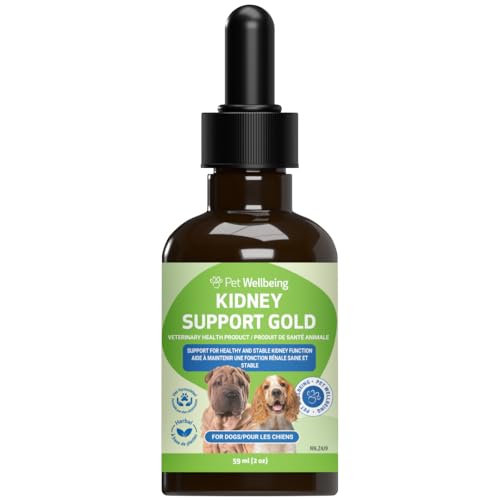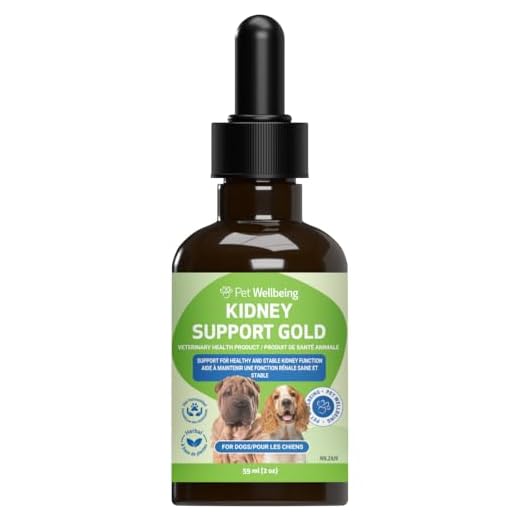




Elevated calcium levels in pets significantly impact their overall health and longevity. If a furry companion is diagnosed with this condition, immediate veterinary intervention is critical. Depending on the underlying cause, treatment options may include medication, dietary changes, or addressing specific health issues that contribute to the hypercalcemia.
In my experience, I observed that swift action can lead to improved outcomes. For instance, a friend’s Labrador retriever faced severe calcium imbalance due to kidney issues. With prompt treatment and regular veterinary check-ups, the pup managed to maintain a good quality of life for several more years.
Regular monitoring is crucial for any canine facing this challenge. Routine blood tests can help track calcium levels and assess the effectiveness of treatment. By staying proactive and following veterinary advice, owners can significantly influence the duration and quality of their beloved pet’s life.
Expected Lifespan During Elevated Calcium Levels
In cases of elevated calcium levels, the prognosis varies significantly based on underlying causes and treatment effectiveness. Immediate veterinary intervention is crucial; conditions such as cancer or kidney disease may lead to a more severe outlook. If diagnosed early and managed appropriately, a companion could potentially have months to years ahead. Conversely, untreated severe hypercalcemia often results in a shorter timeframe, often measured in weeks.
Regular check-ups and appropriate therapies can enhance wellbeing and longevity. Increasing fluid intake, dietary adjustments, and medications might help in controlling symptoms and stabilising calcium levels. Each situation is unique, so it’s essential to maintain open communication with a veterinarian. Observing changes in behaviour and appetite can also signal the need for timely reassessment.
Supportive care plays a pivotal role. Ensuring comfort and minimising stress can contribute positively to quality of life. Engaging in gentle activities and maintaining a familiar environment can help alleviate some discomfort. Emotional support from family members can make a significant difference during this challenging time.
Monitoring and adapting care strategies based on individual responses will be key in navigating this health challenge. Regular follow-ups will provide guidance on the best course of action as conditions evolve.
Understanding Hypercalcemia in Dogs
When faced with elevated calcium levels in canines, immediate action is key. This condition can lead to various health complications, including kidney problems, digestive issues, and even neurological symptoms. Regular veterinary check-ups are essential for early detection and management of hypercalcemia.
Diet plays a significant role in managing this condition. It’s advisable to consult your vet for specific dietary recommendations tailored to your pet’s needs. For instance, if you have a senior Rottweiler, consider exploring the best dog food for senior rottweiler options, as nutrition can help in stabilising calcium levels.
| Symptoms | Management Tips |
|---|---|
| Increased thirst and urination | Ensure constant access to fresh water. |
| Loss of appetite | Consult a vet for dietary adjustments. |
| Vomiting | Monitor closely and report to a veterinarian. |
| Weakness or lethargy | Limit activity and schedule a vet visit. |
Close monitoring of symptoms and regular veterinary evaluations can help manage the situation effectively. Always prioritise your pet’s health by being observant and proactive in their care.
Common Symptoms of Hypercalcemia to Watch For
Recognising signs of elevated calcium levels in pets is crucial for early intervention. Look for these symptoms: excessive thirst and frequent urination, as a result of increased fluid consumption. This can lead to dehydration and other complications.
Behavioural Changes
Noticeable mood swings or lethargy are common indicators. If your furry friend appears more tired than usual or lacks interest in play, it might be a signal of underlying issues. Keep an eye out for any unusual aggression or irritability as well.
Physical Symptoms
Vomiting and loss of appetite often accompany this condition. If your pet is refusing food or seems to have an upset stomach, it’s worth investigating further. Abdominal pain may manifest as whining or restlessness. Additionally, watch for any signs of constipation or difficulty moving. This can be due to muscle weakness associated with high calcium levels.
Regular veterinary check-ups can help monitor calcium levels, ensuring your companion stays healthy. If you observe any of these symptoms, consult a veterinarian immediately for further evaluation and treatment options.
Factors Influencing Lifespan with Hypercalcemia
Several elements directly impact the longevity of a canine experiencing elevated calcium levels.
Underlying Health Conditions
- Kidney Function: Compromised renal health can exacerbate calcium imbalance, leading to more severe symptoms.
- Malignancies: Tumours, especially those affecting the parathyroid glands, can significantly shorten lifespan.
- Hormonal Disorders: Conditions such as hyperparathyroidism may require specific management to improve outcomes.
Owner’s Response and Treatment
- Timeliness of Veterinary Care: Prompt medical intervention can help manage symptoms and delay progression.
- Adherence to Treatment Plans: Following prescribed medications and dietary changes is crucial for stabilising calcium levels.
- Regular Monitoring: Frequent check-ups to monitor calcium levels and overall health can aid in early detection of complications.
Consideration of these factors is essential in assessing the situation and determining the best course of action for a pet facing high calcium levels.
Diagnostic Procedures for Hypercalcemia in Dogs
Veterinary assessment should begin with a thorough history and physical examination. Blood tests are crucial for diagnosing elevated calcium levels. A complete blood count (CBC) and biochemical profile provide insights into organ function and electrolyte balance. Specific attention should be given to serum calcium measurements, where total calcium and ionised calcium levels are evaluated.
Advanced Diagnostic Techniques
If initial tests indicate hypercalcemia, further diagnostics may be necessary. Urinalysis helps determine whether the kidneys are effectively filtering calcium. Imaging techniques, like X-rays or ultrasound, can reveal underlying causes such as tumours or abnormalities in the lymph nodes and organs. In some cases, additional tests like a parathyroid hormone (PTH) assay or PTHrP (parathyroid hormone-related peptide) analysis are recommended to identify the precise cause of calcium elevation.
Specialist Consultation
When routine diagnostics fail to pinpoint the problem, referral to a veterinary internist might be essential. They can offer advanced testing and interpretation, ensuring the most accurate diagnosis. Continuous monitoring of calcium levels during treatment is critical to assess the effectiveness of interventions and adjust them as necessary.
Treatment Options for Managing Hypercalcemia
Immediate action is necessary when faced with elevated calcium levels in pets. Initial therapy often involves intravenous fluids, which help dilute calcium concentrations and promote kidney function. This approach can lead to a rapid decrease in calcium levels.
Diuretics, such as furosemide, may also be administered to facilitate calcium excretion through urine. Monitoring hydration status is essential during this process to prevent dehydration and electrolyte imbalances.
In cases where the underlying cause is identified, targeted treatments can be employed. For instance, if hyperparathyroidism is the trigger, surgical removal of the parathyroid glands may be necessary. If malignancy is present, addressing the cancer through chemotherapy or radiation therapy can significantly improve calcium levels and overall health.
Medications like bisphosphonates, which inhibit bone resorption, can be effective in managing chronic conditions. These should only be prescribed by a veterinary specialist familiar with the specific needs of the animal.
Dietary adjustments are also vital. Reducing calcium intake through a balanced diet tailored to the pet’s condition can aid in managing elevated levels. Always consult with a veterinarian before making any dietary changes.
Regular monitoring of calcium levels and overall health is crucial for pets undergoing treatment. Follow-up visits ensure that the chosen management strategy is effective and allows for timely adjustments if needed.
Dietary Adjustments for Dogs with Hypercalcemia
Incorporating low-calcium foods into your pet’s meals is crucial. Opt for lean meats like chicken or turkey, which provide protein without excessive calcium. Avoid dairy products, as they contribute significantly to calcium levels. Vegetables like carrots and green beans are excellent for filling up without adding calcium.
Hydration is Key
Ensure your furry friend has access to fresh water at all times. Adequate hydration helps dilute calcium in the bloodstream, which can alleviate some symptoms associated with elevated levels. Try adding water to dry food or offering low-sodium broth as a treat to encourage fluid intake.
Consulting a Veterinary Nutritionist
Working with a veterinary nutritionist can provide tailored meal plans specific to your pet’s needs. They can help identify specific food brands and recipes that maintain balanced nutrition while controlling calcium levels. Regular monitoring of your pet’s condition through blood tests is also advisable to adjust the diet as needed.
For additional insights on optimizing your photography skills, check out this article on whether are phone cameras as good as dslr.
Monitoring Your Pet’s Condition Over Time
Regular check-ups are imperative for pets facing elevated calcium levels. Schedule veterinary appointments at least every three to six months, or as recommended by your vet. This helps track changes in health status and adjust treatment plans accordingly.
Key Monitoring Techniques
- Blood Tests: Frequent blood analyses help assess calcium levels, kidney function, and overall health.
- Urinalysis: Monitoring urine can reveal issues related to kidney function and calcium excretion.
- Weight Tracking: Keep an eye on weight fluctuations, which may indicate underlying issues.
- Behaviour Observations: Note changes in activity levels, appetite, and mood, as these can signal health shifts.
Home Care Tips
- Maintain a consistent feeding schedule with a recommended diet.
- Ensure access to fresh water at all times to promote hydration.
- Limit strenuous activities, particularly during hot weather or if your pet shows signs of fatigue.
- Consider keeping a health journal to document any changes and share this with your veterinarian during visits.
It’s essential to stay proactive. Engaging with your veterinarian on any observed changes can lead to timely interventions. Monitoring health over time not only aids in adjusting treatments but also improves the quality of life for your furry friend.







